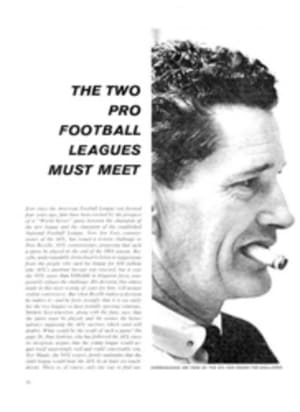
A FOUR-LEVEL IGLOO FOR FOURTEEN
The ingeniously compact ski house on these pages is 50% igloo, 50% submarine and 100% efficient. Its unique design is the product of the challenge Richard Pinkham proffered to John Black Lee, a New Canaan architect who—not incidentally—is also a member of the National Ski Patrol. There are six skiing Pinkhams: Dick, a New York advertising executive; Bunnie, a wife with a den mother's serenity; Penny, a senior at Radcliffe; and Dick Jr., David and Betty, prep schoolers. They built their ski house as a family meeting ground in West Dover, Vt., convenient to schools in New England and home in Rye, N. Y. When the family comes for a weekend or a week of skiing, each boy and girl may bring two guests. Six Pinkhams plus eight guests equals 14. The problem Architect Lee had to solve was how to sleep and feed this kind of teen-age mob in a house that would be neither dormitory nor hotel but combines the facilities of both in 2,000 economic square feet.
The outside of the house is a cedar-shingled pyramid, which becomes both wall and roof, with a skylighted apex and the corners cut off and glassed in; the outlook is pine forests on one side, Mt. Snow across the valley. Skis are left outdoors; boots are left in a well-heated entrance hall. The plastic-coated floors, ceilings and walls are of pine. Heat from the oil furnace in the basement-workroom flows through holes around the baseboards, and the windows never frost up. The living room (left), its back to the wind, looks snugly toward a brick hearth.
John Lee, an ex-naval officer, used overhead and below-deck space as tidily as a naval architect. Storage space is sandwiched into every nook—such as the low area where the ceiling slopes to the ground. Much furniture is built in. Two of the four bedrooms have cozy bunks above closets (left). The operations center—the kitchen—is housed in two L-shaped units, directly above the furnace and bathroom core. All pipes are thus kept away from outside walls where freezing is a danger. Above the kitchen, wide, sturdy platforms (opposite, extreme right) reached by ladder become sleeping-bag lofts by night; by day, they provide the best seats in the house for seeing what's for dinner.
The naval efficiency does not stop with the architecture. On full-house weekends there is a duty watch, with a Pinkham child as mate. Everyone makes his own bed and breakfast, but the watch keeps the fire in order, sets the table, helps with dinner and does KP afterwards.
The Pinkhams visit their house year round—for spring and summer golf and riding; for the spectacular autumn foliage of October. They have found still another way to make this $30,000 investment a worthwhile one: when they are away the nearby Snow-brook Club rents the house for them by the weekend or week to other ski families—a system that has been developed in many resort areas to make the second house a practical possibility. For additional news of worthwhile ski investments, turn the page.
PHOTO
MARK KAUFFMAN
The photograph at left and drawing above look into ski house from same elevation. Cutaway shows the four levels. On ground level there is kitchen core, living and dining areas. Sleeping lofts are above. Half below ground are four bedrooms; entirely below, two baths and (not shown) a furnace room.
ILLUSTRATION
[See caption above.]
ENTRANCE
THREE PHOTOS
Not only is space saved—as in the built-in bunk in the bedroom at left—but so is time. Young Dave Pinkham, in favorite bowler (below), becomes after-ski short-order cook, with the aid of a drugstore-variety soup-heating unit. At right: Bunnie Pinkham serves lunch to men of her family and two girl guests.

